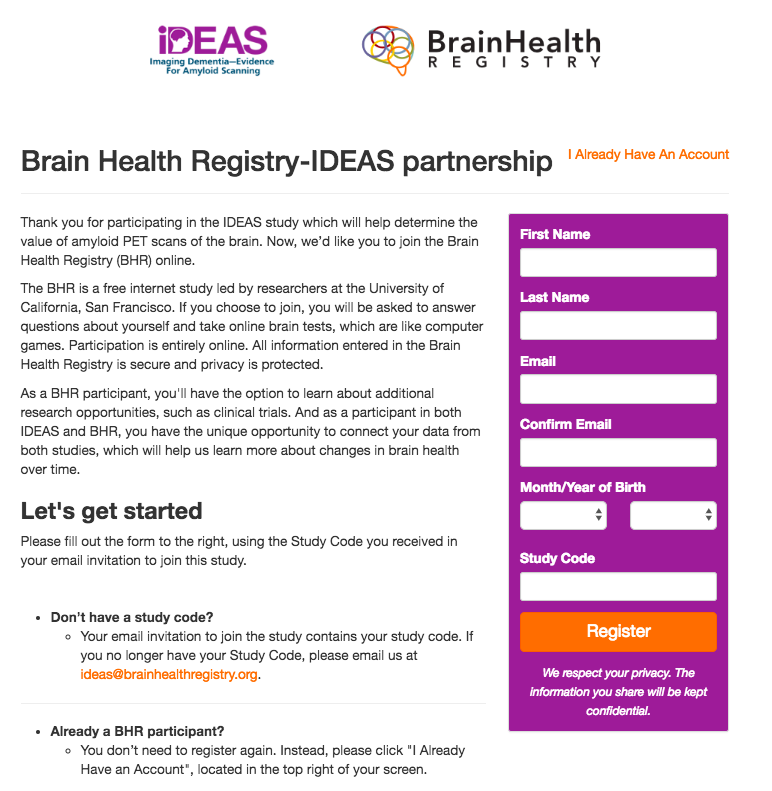Recruitment into the BHR co-enrollment program is executed by the collaborator with suggestions from BHR on different recruitment strategies to help the collaborator determine what best fits their co-enrollment program. Suggested methods of recruitment are summarized below:
- Emails – Email invitations including information about the collaboration, a co-enrollment code and a link to a study specific registration page can be sent to participants by the collaborator.
- Customized “Sign Up” web page – Participants can be shown a study specific sign-up web page during an in-clinic visit. This page would include information about the collaboration and a sign-up form to provide their name, a co-enrollment code, and email address. BHR would then send an invitation email with a link to the study specific registration page.This method will require a computer to be available during the in-clinic visit.
- Printed Informational materials – Printed co-enrollment materials such as a brochures or flyers can be mailed to the participant or provided during an in-clinic visit. These materials will include information about the collaboration, a co-enrollment code (CEC), and a URL to a study specific registration page.
- Phone call – Collaborator study staff can call the participants to inform about BHR and/or invite them to BHR. BHR can then send an invitation email with information about the co-enrollment study, a co-enrollment code (CEC), and a link to the study specific registration page.
These recruitment methods can be done separately or together. For example, a collaborator could choose to provide the participant with a printed brochure AND a customized “Sign Up” web page during an in-clinic visit.
These recruitment methods can be done separately or together. For example, a collaborator could choose to provide the participant with a printed brochure AND a customized “Sign Up” web page during an in-clinic visit.
Collaborators may opt for a full or modified BHR experience, in which their co-enrolled participants are given a subset of questionnaires and/or cognitive tests to suit their study needs. Participant experience (including task order, grouping and introductions) and study visit frequency may also be customized to the specific needs of the collaborator. Please email investigators@brainhealthregistry.org to receive a copy of the current participant questionnaires.
All communication content can be co-branded, meaning that the collaboration name, “[Collaborator Name] – Brain Health Registry (BHR)”, and both of the study logos can be used for the following: a) study specific registration page; b) recruitment invitation emails; c) study communication emails (including welcome, reminder to complete tasks, completion, follow-up visit reminder); and d) login page. Templates are provided by BHR. Collaborators are encouraged to provide a study logo.






